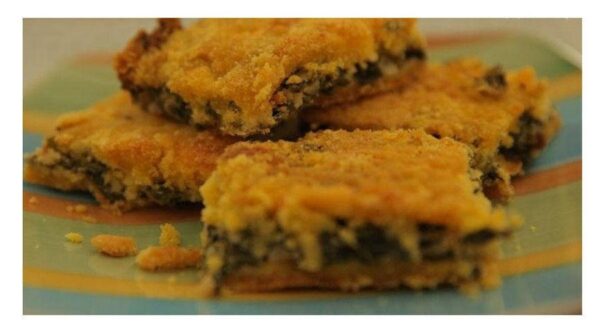The traditional pita from the mountainous Agrafa region named “plasto” has its origins in the era of Ottoman rule. At that time, due to the general poverty and barrenness of the land, it was considered painful for the villagers to carry flour on their backs from the nearest town of Karditsa to bake bread. Thus, by planting corn plants that grew without particular care, they obtained corn flour, the so-called “bobota”, which they used to make a kind of yellowish bread which was quite nutritious.
Over the years and as the cornflour was abundant in their land, other foodstuffs were made in addition to the “bobota”. One of these was the traditional pie “plasto”, which they made quickly because there was no need to prepare a sheet of pastry using a rolling pin. Using the green leaves found in the yard, a quick but delicious meal was prepared which became the first to accompany the shepherds of the area. Its taste was also due to the baking method, which was done in a clay pot over burning coals.
Today, plasto is a terrific pita made in the villages of Thessaly quickly and easily using cornflour, even at social events, such as engagements and weddings, as a first dish.
In recent years, the absence of some grassy vegetables has led housewives to replace greens with other vegetables that can be found in the market. Thus, wild greens have been replaced by a variety of commercially available grasses such as nettles, sorrel, zucchini, zucchini-leaves, parsley, and spinach for filling.
Photo: enjoythessaly.com




